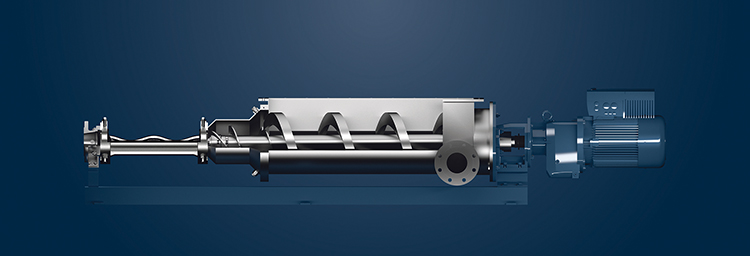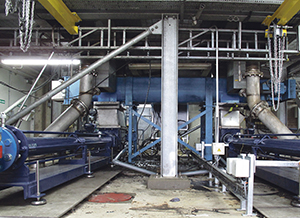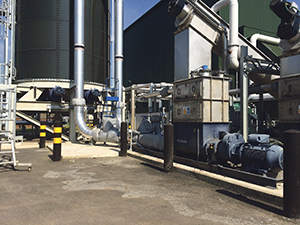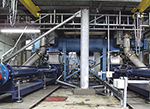By Lesley Eaton, Business Development and Marketing Manager, SEEPEX

Energy generation from the anaerobic digestion of sewage sludge has reached 888 GWh* – an increase of over 25% since 2011 – yet the installed theoretical MWe capacity has grown by just 9%. How has the energy generated increased so dramatically and is the trend for efficiency improvements set to continue?

One of the biggest changes is the high temperature heat treatment of sludge. This makes it more biodegradable and enables loading rates to the digesters to be doubled, delivering a higher gas yield. The final sludge is also pathogen-free and can be easily dewatered, resulting in a more valuable end product.
However, correct equipment selection is also playing a part in the continued increase in energy generation. Pumps are vital to the water sector’s continued success and selecting the right pump for the job will give the optimum return on investment. Minimising energy use is desirable and progressive cavity (PC) pumps fare well in this respect, maintaining an even flow despite varying pressures and variable sludge viscosities. Tailor-made packages – integrating pumps with complementary equipment such as special live bottom silos, boundary layer injection systems and back-mixing technology – together with intelligent control systems, will also improve reliability, performance, and cost efficiency.

New facilities optimised by Anglian Water
Anglian Water has installed sludge reception centres and advanced energy generation using thermal hydrolysis at three locations. They selected SEEPEX PC pumps as they can handle both low and high viscosity products; can pump sludge containing up to 45% dry solids (ds); have good discharge pressure capabilities that enable long distance pumping; and boast non-pulsating flow characteristics. Open hopper pumps for high solids transfer and liquid transfer pumps also formed part of the package.
A visit to an existing sludge treatment plant demonstrated how removing conveyors in parts of the process could be achieved by using customised pumps fitted directly to silo outlets, which could back-mix sludge cake with dilution liquid to the required ds%. Integrated controls link the liquid addition and back-mixing silo pumps to ensure optimised mixing. As well as lower capital costs, operating costs were reduced by constantly injecting small amounts of liquid to the pump outlet, reducing friction losses and operating pressure, and extending the service intervals.
 Thames Water upgrades existing technology
Thames Water upgrades existing technology
Thames Water STW at Reading aimed to reduce sludge transport costs by increasing the ds% of dewatered sludge from 22-25%. However, the piston pumps which transferred the sludge were a limitation due to frequent maintenance requirements, high pressures generated, high operating and maintenance costs, strongly pulsating flow, and an absorbed power requirement of 31kW.
By replacing them with SEEPEX PC pumps, Thames Water can now transfer higher ds% sludge with a lower energy demand (18kW, a reduction of 40%), also reducing the system’s pressure rating, enabling de-rating of pipework and valves. The pumps have been in use for over two years and have required no maintenance interventions, delivering a hat trick of cost reductions: lower sludge disposal costs, lower energy use and reduced maintenance costs.
T 01935 472376
sales.uk@seepex.com
www.seepex.com
*2016 Digest of UK Energy Statistics

